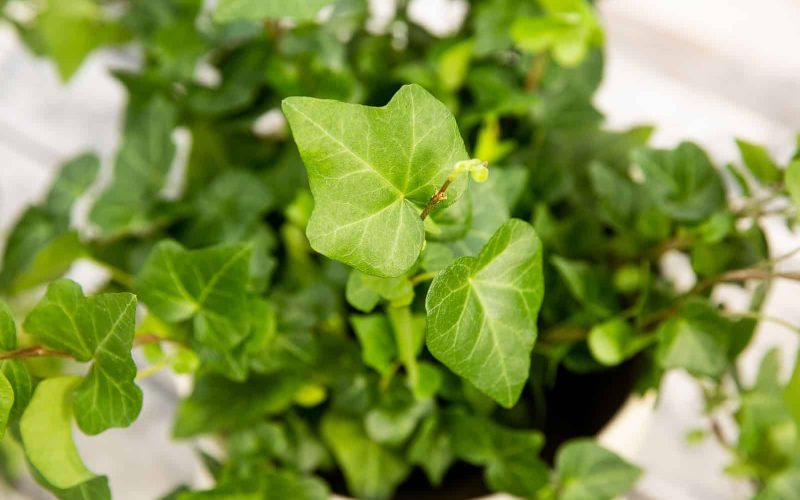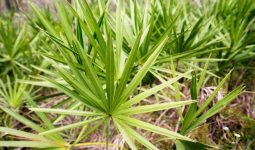English ivy houseplant is an excellent creeper. These houseplants can cling along any surface through small roots. They grow extremely fast.
These are evergreen vine-type plants originating from Europe and some parts of Russia. The English ivy houseplants are used as a decorative cover from the ground.
In outdoor decorations, these plants can be used as delicate canvasses for stone or brick walls. They are flexible and adjustable and can grow in many different conditions.
Mostly, these English ivy houseplants are very popular for ornamental purposes. They can be grown beautifully in hanging baskets.
Fundamentals of English Ivy Houseplant
The botanical name of the English ivy Houseplant is Hedera Helix. While it is known as English ivy in common.
Along with the mature size of about 20 to 80 Ft in length and 3-50 Ft in Width, they are long vine-type plants.
The plant can survive partially in fun sunlight. The ivy houseplant grows well in fully drained, moist soil with acidic pH.
The plant blooms at its full in the early winter and fall seasons. The interesting thing is that the English ivy houseplant also gives flowers.
It produces bright yellow and cream flowers that grab people’s attention. They might be poisonous to your pets, i.e., cats and dogs.
One of the most adorable things about this plant is that it is unlimited in its expansion. You can grow as many long vines as you want. Sometimes, it is considered an intrusive species in the United States.
The English ivy houseplant is very popular on the West Coast, in New York City, and in many parks.
As it is a very attractive and elegant plant vine, many people grow it outside their homes in hanging baskets or alongside their walls.
Flourishing English Ivy Houseplant
The plant doesn’t require much attention and care; it grows on its own. It is not an attention-seeker plant as it affords negligence.
Some thumb rules must be considered when growing an ivy plant inside your house. When growing the English ivy houseplant, insert the plant in adequately rich soil.
Plant ivy where sunlight cannot reach it. While propagating, place the plant 46-61 cm (about 18 to 24 inches) apart to experience instant coverage.
At this stage, the thing that must t be considered is that do not expect the instant growth of the plant just after placing it into the soil. At the initial stage, it takes some time to grow.
Adding Greens To Your Home
The estimated growth of the vines is about 50 feet (15 m) in length. The ivy houseplant vines will grow gradually during the first year of planting.
But in the upcoming years, the plant will show tremendous growth. Soon, it will spread its vines on the nearby plants, trees, walls, and whatever comes along its way.
You can’t buy happiness but you can buy plants and that’s a kind of the same thing! 🤣 🤣
Greenery makes a home more beautiful and attractive. The English ivy houseplant enhances this by covering the old walls with its beautiful and extraordinary vines.
The plus point is when the flowers pop out. It gives a very pure and heartily sensation to the viewers. Adds ethnicity to the home.
Care and Maintenance of English Ivy Houseplant
English ivy is a vigorous grower and exceptionally fast-growing houseplant. In this regard, before purchasing, it will be better to consult with the nursery about whether it is an intrusive species or not.
It is important to know about the species of the plant because if this plant turns out to be an extremely aggressive grower, it can damage your nearby plants.
To avoid this situation, consider gathering information about the plant you purchase for your house.
Besides homes, ivy houseplants are also available in gardens and parks because of their beauty and elegance.
The secret to growing ivy is to serve it in moist and humid weather conditions and cool and shady nights.
This plant grows best in the dry winters. Some more tips and tricks to grow your ivy plant successfully are as follows:
Light Balance
The fundamental requirement of the English ivy houseplant is “bright light.” Whether it is summer or winter, this plant needs bright light to grow.
Other than this, the weather is believed to be already hot in the summer. Exposing the plants directly to sunlight may damage the foliage. In winter, the ivy happily accepts direct sunlight.
Soil
The ideal soil for the ivy plant is moist, fully fertile, and well-drained. In summer, the soil should be extremely moist and damped to provide a cooling effect.
Humidity and Temperature
Moderate humidity conditions, i.e., not too warm or too cool, work best for the ivy houseplant. In summer, if humidity is encouraged, the plant’s growth also becomes more flawless.
Concerning the temperature conditions, growing the ivy indoors requires quite cool weather and nights below 60 degrees Fahrenheit.
Is English Ivy Houseplant Poisonous?
The plant is not poisonous, but it can be toxic to pets, such as cars and dogs. If your pet ingests any ivy leaf, it may cause diarrhea, vomiting, abdominal pains, nausea, decreased appetite, and swelling in the mouth or face.
If you notice any of these symptoms in your pet, contact your vet immediately. Moreover, spider mites and aphids are the most common pests that attack ivy plants.
But don’t worry; insecticidal soaps work best to get this pest out of your plant.
Closing Thoughts
To plant the ivy plant is a really simple thing. You have to grab some of its stem cuttings and place them into nice, moist, and well-nourished soil. In the beginning, you have to water it properly.
The point is that it begins to bloom and shows exceptional results. They can easily grow in any container or plant pot.
If you already have an English ivy plant inside your house and you have no idea how to handle its long-lasting vines, then this article is worth considering.
Give this write-up a big thumbs up if it helps you.








